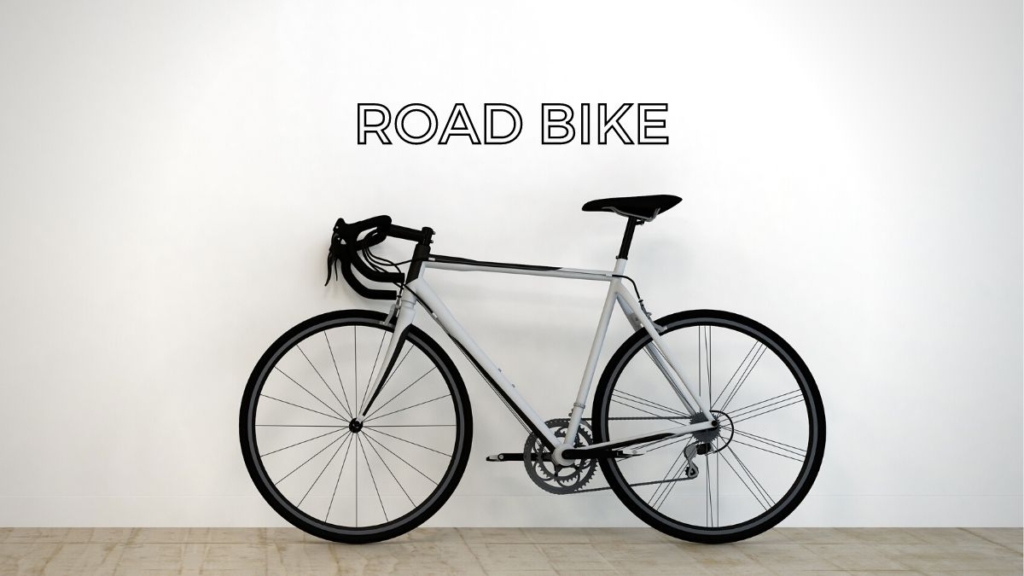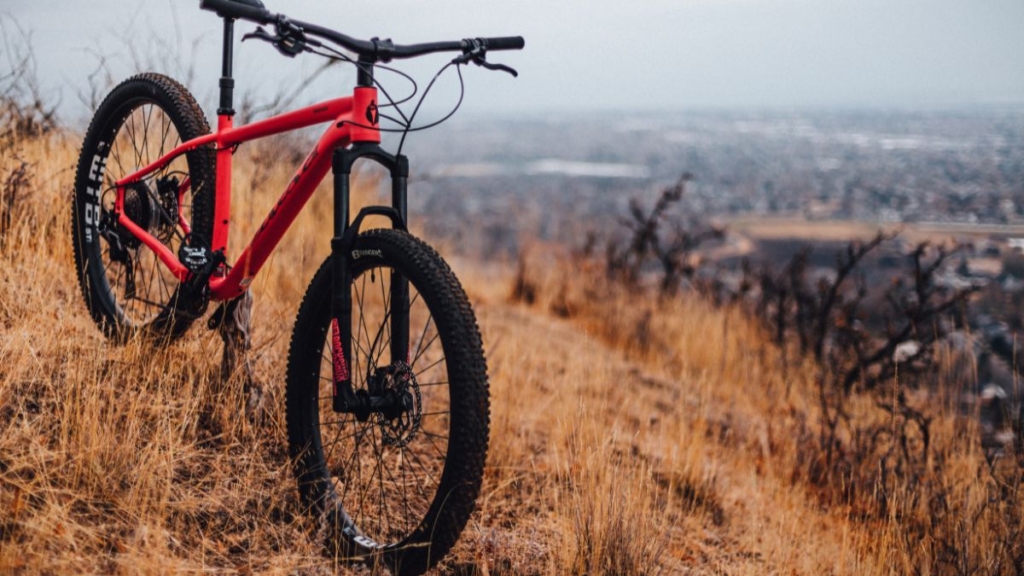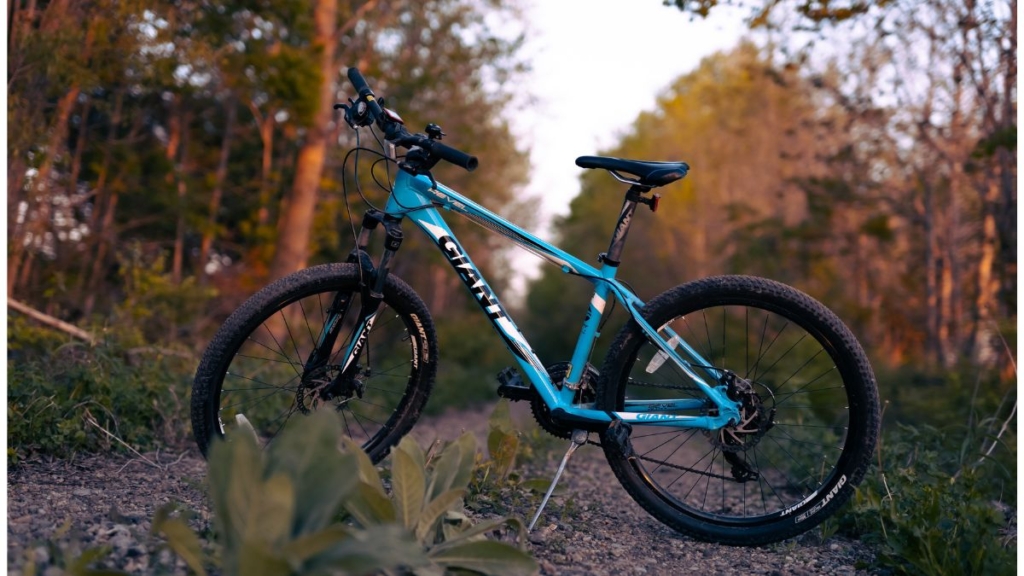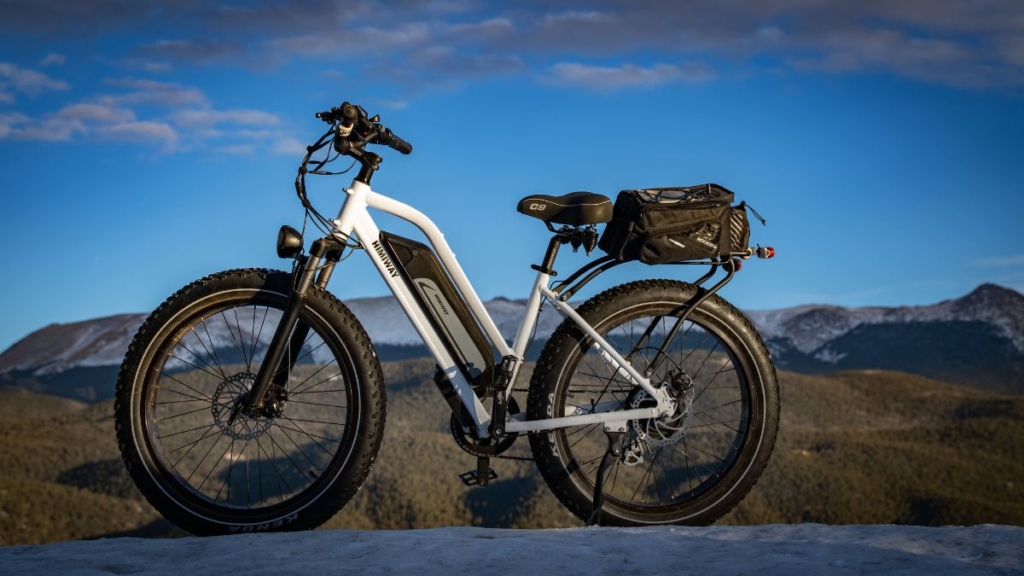Cycling is not only an incredible way to stay fit and healthy, but it’s also an environmentally-friendly and cost-effective mode of transportation. With numerous advantages ranging from health benefits to environmental sustainability, selecting the perfect bike for your needs is more important than ever. Studies have shown that regular cycling can reduce the risk of heart disease by up to 50% and lower the risk of developing type 2 diabetes by up to 40%. In addition, cycling has been linked to improved mental well-being and reduced stress levels. The ideal bike can enhance your riding experience, boost your motivation, and ultimately, help you achieve your cycling goals.
Read all the bike guides here…
When it comes to choosing the right bike, however, the multitude of options available can make the process quite daunting. But worry not! I’m here to guide you through this journey, making the decision-making process as smooth as possible.
In this Bike Buyers Guide, we’ll explore the various types of bicycles available on the market, discuss the factors you need to consider before making a purchase and provide helpful tips on finding the perfect fit for your needs and preferences. So, buckle up and get ready to embark on an exciting adventure toward finding your ideal two-wheeled companion. Let’s get started!
Factors to Consider Before Buying a Bicycle
Intended Use
Before purchasing a bike, it’s essential to consider the primary purpose of your cycling activities. Identifying your intended use will help you narrow down the most suitable bicycle options.
- Commuting: If you plan to use your bike primarily for commuting, you’ll want a reliable, low-maintenance option with features like mudguards and pannier racks for carrying bags or gear. Consider road bikes, hybrid bikes, or electric bikes for this purpose.
- Fitness: If your primary goal is to improve your fitness, look for a bicycle that offers a balance of speed, performance, and comfort. Road bikes or fitness-focused hybrid bikes would be suitable choices.
- Off-road Adventures: If you plan to explore off-road terrains, mountain bikes or fat bikes are ideal choices. These bikes have wider tires and suspension systems to handle rough surfaces and provide stability.
- Long-distance Touring: For long-distance bike touring or multi-day adventures, a touring bike with a sturdy frame, comfortable riding position, and the ability to carry heavy loads is your best bet.
- Casual Rides: If you’re looking for a bicycle for casual rides around the neighborhood or local parks, consider cruiser bikes or comfort bikes. These bikes prioritize a comfortable riding position and are suitable for leisurely, relaxed rides.
Budget
- Price Range: Bicycles come in a wide range of prices, from affordable entry-level options to high-end models. Determine your budget before shopping, and keep in mind that spending a little more upfront for a quality bike can save you money in the long run.
- Investment in Accessories and Maintenance: Don’t forget to factor in the cost of essential accessories, such as helmets, locks, lights, and maintenance tools. Regular maintenance is crucial to keep your bike in good working order and prolong its lifespan.
Personal Preferences
- Aesthetic Appeal: While the appearance of your bike may not be the most critical factor, it’s essential to choose a design that you find visually appealing. You’ll be more likely to ride and enjoy a bike that you’re proud to show off.
- Comfort: A comfortable bike is crucial for an enjoyable riding experience. Pay attention to factors such as saddle comfort, handlebar height, and frame geometry. Test ride multiple bikes to find the one that best suits your body and riding style.
- Brand Loyalty: Some cyclists have a strong preference for specific brands based on personal experiences or recommendations. If you’ve had a positive experience with a particular brand, consider exploring their bicycle offerings. However, keep an open mind and be willing to try bikes from other manufacturers as well.
Types of Bicycles
The world of bicycles offers a diverse range of options, catering to various needs, preferences, and riding styles. With the increasing popularity of cycling, both for fitness and commuting purposes, it’s essential to understand the different types of bikes available on the market. Each bicycle type is designed with specific features and capabilities, making it well-suited for particular uses and terrains. In this part, we will delve into the most popular types of bicycles, providing you with a comprehensive guide to help you find the perfect bike for your needs.
Some of the most popular types of bicycles in the market include road bikes, mountain bikes, hybrid bikes, touring bikes, cruiser bikes, electric bikes, folding bikes, cyclocross bikes, and fixed gear/single-speed bikes. Each of these categories offers unique characteristics, advantages, and disadvantages, making them more suitable for specific purposes and riding conditions.
As you continue reading, you will find a detailed introduction to each type of bike, highlighting their key features, ideal use cases, and the pros and cons associated with them. This information will equip you with the knowledge necessary to make an informed decision when choosing the perfect bike to complement your riding style, preferences, and goals. So, let’s dive in and explore the fascinating world of bicycles!
Road Bikes

Key Features: Road bikes are designed with lightweight frames, narrow tires, and drop handlebars to maximize speed and efficiency on paved surfaces. These sleek bicycles are built for aerodynamics, allowing riders to achieve greater speeds with less effort.
Ideal For: Road bikes are an excellent choice for cyclists who value speed, performance, and long-distance riding on smooth, paved roads. As the famous cyclist Greg LeMond once said, “It doesn’t get any easier, you just get faster.” This type of bike is ideal for those who want to challenge themselves, participate in road races, or simply enjoy the thrill of riding at high speeds.
Greg LeMond once said, “It doesn’t get any easier, you just get faster.”
Pros and Cons: While road bikes excel in speed and efficiency, they might not be the most comfortable or versatile option for some riders. Due to their lightweight design and focus on performance, they can be more expensive than other types of bikes. Additionally, road bikes are not well-suited for off-road use, as their narrow tires and lack of suspension make them less stable on rough terrain. Moreover, their design does not easily accommodate heavy loads, making them less suitable for touring or commuting with large amounts of gear.
Mountain Bikes

Key Features: Mountain bikes are specifically designed to tackle off-road adventures, featuring sturdy frames, wider tires with knobby tread for better grip, and suspension systems that absorb shocks from rough terrain. These bikes often come with multiple gears to make climbing steep inclines easier and disc brakes for improved stopping power in various conditions.
Ideal For: Mountain bikes are the go-to choice for off-road enthusiasts, trail riders, and those who enjoy exploring challenging terrain. As mountain biking legend Gary Fisher said, “The more I ride, the more I love it.” These bikes are perfect for those who wish to venture into the great outdoors, ride on dirt trails, or conquer technical singletrack.
Pros:
- Excellent stability and control on rough terrain, providing a confident and enjoyable riding experience.
- Durable construction designed to withstand the demands of off-road riding.
- Wide range of gears and powerful brakes to handle steep inclines and descents.
- Various sub-categories, such as cross-country, all-mountain, and downhill bikes, cater to specific off-road riding styles and preferences.
- Suspension systems that can be adjusted or locked out to suit different terrains and rider preferences.
Cons:
- Heavier and less efficient on paved surfaces, making them less suitable for commuting or road cycling.
- Can be more expensive due to specialized components and advanced suspension systems.
- Maintenance may be more involved, particularly for bikes with full suspension systems and hydraulic disc brakes.
- Not as fast or nimble as road bikes, which could be a drawback for those who prioritize speed and performance.
- Can be more challenging for beginners to handle, especially on technical trails or steep descents.
Mountain bikes are an excellent option for riders who love to explore off-road trails and tackle challenging terrain. However, their heavier weight and reduced efficiency on paved surfaces may not make them the ideal choice for those who primarily ride on roads or require a versatile bike for various uses. It’s essential for those new to the world of bicycles to consider the unique features and capabilities of mountain bikes and how they align with their personal cycling goals and preferences before making a decision.
Hybrid Bikes

Key Features: Hybrid bikes are designed to offer the best of both worlds, combining features of road and mountain bikes for a versatile riding experience. They typically feature a comfortable, upright riding position, medium-width tires for better traction and stability, and a lightweight frame for improved maneuverability. These bikes often come with a wide range of gears to handle various terrains and conditions.
Ideal For: Hybrid bikes are an excellent choice for those who seek a versatile bicycle for various purposes. They are well-suited for commuting, fitness riding, and casual cycling on both paved and light off-road surfaces. These bikes are perfect for riders who want a single bike that can handle different types of terrain and riding situations.
Pros:
- Good balance between speed, comfort, and versatility, making them suitable for a variety of riding conditions and uses.
- Upright riding position offers increased comfort and better visibility in traffic.
- Wider tires provide improved stability and traction on different surfaces.
- Lightweight frame allows for easier handling and maneuverability.
- Wide range of gears to accommodate varying terrains and inclines.
Cons:
- May not be as efficient or fast as dedicated road bikes, which could be a drawback for those who prioritize speed and performance.
- Not as capable off-road as mountain bikes, limiting their use on more challenging or technical trails.
- While versatile, they might not excel in any specific discipline, potentially making them less suitable for dedicated road or mountain bikers.
- Components may not be as high-end as those found on specialized road or mountain bikes, which could affect durability and performance.
Hybrid bikes are a fantastic option for riders seeking a versatile and comfortable bicycle that can handle a variety of terrains and uses. However, they may not provide the same level of efficiency or off-road capability as specialized road or mountain bikes. For those new to cycling, it’s essential to consider the unique features and benefits of hybrid bikes and how they align with personal cycling goals and preferences before making a decision.
Touring Bikes
Key Features: Touring bikes are specifically designed to handle the demands of long-distance cycling. They feature a sturdy frame built to carry heavy loads, a comfortable and relaxed riding position, and various mounting points for pannier racks, fenders, and multiple water bottles. These bikes often come with a wide range of gears to tackle diverse terrains and inclines, as well as robust wheels and wider tires for improved stability and comfort.
Ideal For: Touring bikes are an excellent choice for those who enjoy multi-day trips, long-distance adventures, and bikepacking. They are perfect for riders who want to explore new places and experience the joy of self-supported cycling while carrying all their essential gear.
Pros:
- Comfortable and relaxed riding position for long hours in the saddle.
- Durable and sturdy frame designed to carry heavy loads, making them ideal for self-supported trips.
- Wide range of gears to handle various terrains and conditions.
- Mounting points for pannier racks, fenders, and water bottles, allowing riders to customize their setup according to their needs.
- Wider tires and robust wheels provide improved stability and comfort on diverse surfaces.
Cons:
- Heavier and slower than other bike types, which could be a drawback for those who prioritize speed and performance.
- Not as agile or nimble as road or mountain bikes, making them less suitable for technical trails or high-speed racing.
- Specialized components and sturdy construction can lead to higher costs compared to other bike types.
- May not be the most suitable option for casual riders or those who primarily ride on smooth, paved surfaces.
In summary, touring bikes are the ideal option for riders who love to embark on long-distance adventures and self-supported trips. Their comfort, durability, and cargo-carrying capacity make them well-suited for these purposes. However, they may not be the best choice for those who prioritize speed, performance, or agility. As with other types of bikes, it’s essential for newcomers to the world of cycling to consider how the unique features and capabilities of touring bikes align with their personal cycling goals and preferences before making a decision.
Electric Bikes

Key Features: Electric bikes, or e-bikes, come with an integrated motor and battery system that provides varying levels of pedal assistance to the rider. This makes it easier to ride uphill, cover longer distances, and maintain higher speeds with less physical effort. E-bikes are available in various styles and designs, including road, mountain, and hybrid options, catering to a wide range of cycling preferences.
Ideal For: E-bikes are an excellent choice for commuters, recreational riders, and those who want to enjoy the benefits of cycling while reducing the physical strain. They are perfect for riders who wish to tackle longer rides, hilly terrain, or simply want to arrive at their destination with less sweat and effort.
Pros:
- Provides pedal assistance, making it easier to ride uphill, cover longer distances, and maintain higher speeds with less effort.
- Encourages more people to take up cycling, including those who might have physical limitations or concerns about fitness levels.
- Available in various styles and designs to cater to different cycling preferences and needs.
- Can help improve the overall cycling experience by reducing fatigue and allowing riders to focus more on enjoying the ride and scenery.
- Can assist with carrying heavier loads, making them an excellent option for commuters and bikepackers.
Cons:
- Can be significantly more expensive than non-electric bikes due to the additional motor and battery components.
- Heavier than traditional bicycles, which could make them more challenging to maneuver, transport, or store.
- Requires battery charging and maintenance, adding to the overall cost and time commitment.
- Limited range due to battery capacity, which could be a concern for very long rides or remote areas with limited charging options.
- May not be allowed on certain trails or in specific areas due to local regulations and restrictions.
In summary, electric bikes provide a convenient and accessible way for a wider range of individuals to enjoy cycling. They offer pedal assistance to make riding uphill and covering longer distances more manageable. However, e-bikes can be more expensive and heavier than traditional bikes and require additional maintenance and charging. So that’s why we have compiled the list of lightweight ebikes and affordable ebikes. As always, it’s crucial for potential buyers to consider how the unique features and capabilities of electric bikes align with their personal cycling goals and preferences before making a decision.
Read: E-Bike Classifications: What are They and How to Choose?
Folding Bikes

Key Features: Folding bikes are uniquely designed with a compact, collapsible frame that allows for easy storage and transportation. These bikes typically feature smaller wheels, lightweight materials, and a simplified folding mechanism, making them an ideal option for those who need a space-saving solution.
Ideal For: Folding bikes are perfect for urban commuters, travelers, and those with limited storage space in their homes or offices. They’re a popular choice for riders who need a portable bike to take on public transportation, fit in their car trunk, or store in small living spaces.
Pros:
- Portability and convenience, allowing for easy storage and transportation in various situations.
- Ideal for multi-modal commuting, as they can be easily carried onto buses, trains, and other forms of public transportation.
- Space-saving design, perfect for those with limited storage options at home or work.
- Quick and easy folding process, making them user-friendly for riders of all skill levels.
Cons:
- May sacrifice some performance, comfort, and stability due to their smaller wheels and compact design, which could be a drawback for those who prioritize these aspects.
- Not as suitable for long rides or challenging terrain as other bike types, limiting their versatility.
- Can be more expensive than non-folding bikes of comparable quality, due to their specialized folding mechanisms and design features.
- Folding and unfolding process may take some practice, and some models might be more complex than others.
In summary, folding bikes are an excellent choice for riders who value portability, convenience, and space-saving design. However, they may not offer the same level of performance, comfort, or stability as other bike types, and can be more expensive. As with any bicycle purchase, it’s essential to consider how the unique features and capabilities of folding bikes align with personal cycling goals and preferences before making a decision.
Cyclocross Bikes

Key Features: Cyclocross bikes are specifically designed for mixed-terrain racing, featuring a lightweight frame, drop handlebars, and wider, knobby tires that provide better traction on various surfaces. These bikes often come with disc brakes for improved stopping power and mud clearance, as well as a more upright geometry for enhanced control and comfort during off-road sections.
Ideal For: Cyclocross bikes are suitable for riders who want a versatile bike capable of handling both on- and off-road conditions, as well as participating in cyclocross races. They can also be an excellent choice for gravel riding, light trail exploration, and even urban commuting.
Pros:
- Excellent versatility, allowing riders to tackle a wide range of terrain, from paved roads to off-road trails.
- Lightweight and nimble, providing quick and responsive handling in various conditions.
- Wider, knobby tires offer better traction on loose or slippery surfaces.
- Disc brakes provide consistent stopping power in wet or muddy conditions.
- Suitable for cyclocross racing, gravel riding, and even urban commuting.
Cons:
- May not be as comfortable as road bikes for long rides, due to their more aggressive geometry and less focus on aerodynamics.
- Not as rugged or specialized as mountain bikes for extreme off-road use or technical trails.
- Can be more expensive than other bike types, depending on the specific components and features.
- Knobby tires may produce more rolling resistance on paved surfaces, reducing efficiency compared to road bikes.
In summary, cyclocross bikes are an excellent option for riders who want a versatile bike that can handle both on- and off-road conditions. They offer excellent performance on mixed terrain, but may not be as comfortable as road bikes for long rides or as rugged as mountain bikes for extreme off-road use. As with any bicycle purchase, it’s essential to consider how the unique features and capabilities of cyclocross bikes align with personal cycling goals and preferences before making a decision.
Kids Bikes
When it comes to introducing your child to the world of cycling, choosing the right kids’ bike is crucial. Not only will the right bike help your child develop essential biking skills, but it will also ensure a safe and enjoyable riding experience. In this guide, we’ll discuss the key features of kids’ bikes, introduce some popular brands, and highlight the factors to consider when buying a bike for your child.
Features: Kids’ bikes are specifically designed to cater to the needs of young riders. They feature smaller frames, wheels, and components to fit children’s bodies comfortably. Additionally, kids’ bikes often come with features like training wheels or balance bikes for beginners, easy-to-use brakes, and lower standover heights to make getting on and off the bike a breeze.
Some popular brands in the kids’ bike market include Strider, Guardian, WOOM, Frog, and Islabikes. These brands are known for their high-quality products, attention to detail, and commitment to creating safe and enjoyable bikes for children.
When selecting a kids’ bike, there are several factors to consider:
- Size: The most important factor when buying a kids’ bike is the size. A bike that’s too big or too small will be uncomfortable and challenging to ride. Make sure to measure your child’s inseam and height, and compare them with the bike’s size chart to find the right fit.
- Weight: A lightweight bike is easier for your child to maneuver and control. Look for bikes with aluminum frames and lightweight components to ensure the best experience for your young rider.
- Age-appropriate features: Consider your child’s age and skill level when choosing a bike. For beginners, balance bikes or training wheels can help them develop the necessary balance and coordination skills. As they progress, bikes with hand brakes and multiple gears can offer more advanced options for growing riders.
- Safety: Look for bikes with easy-to-use brakes, like coaster brakes or hand brakes with a short reach for smaller hands. Reflective elements and bright colors can also help increase visibility and safety on the road.
- Budget: Kids’ bikes are available in a wide range of prices. While investing in a high-quality bike is essential, consider your budget and how fast your child may outgrow the bike before making your decision.
By keeping these factors in mind, you’ll be well on your way to finding the perfect kids’ bike that meets your child’s needs and preferences, ensuring they have a safe, fun, and exciting introduction to the world of cycling.
